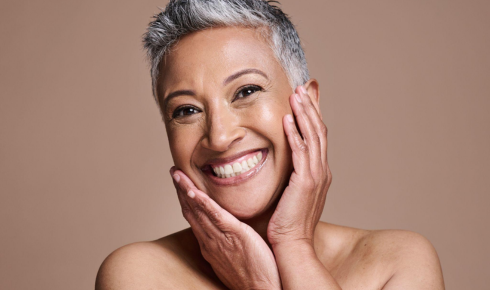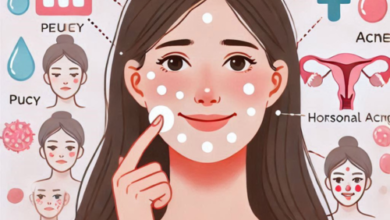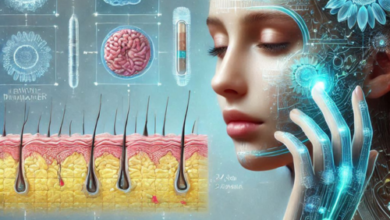Understanding the Science of Skin Aging and Effective Prevention Methods

The quest to maintain youthful skin has driven beauty innovation for centuries, but modern dermatological science has transformed our understanding of skin aging from myth to measurable biological processes. This evolution gives us unprecedented ability to prevent and address visible aging signs through evidence-based approaches rather than empty promises.
The Biology of Skin Aging
Skin aging occurs through two distinct but interrelated processes: intrinsic (chronological) aging and extrinsic (environmental) aging. Intrinsic aging represents the natural, genetically-programmed process that occurs regardless of external factors. Beginning in our twenties, collagen production decreases approximately 1% annually, while elastin fibers gradually lose their resilience.
At the cellular level, several key changes characterize intrinsic aging:
- Decreased cell turnover rates, extending from 28 days in youth to 40-60 days in mature skin
- Reduced sebum production, diminishing the skin’s natural moisturizing capabilities
- Thinning of the dermis layer, decreasing structural support
- Diminished hyaluronic acid synthesis, reducing moisture retention capacity
These natural changes manifest as increased dryness, fine lines, and subtle loss of elasticity—changes that occur even without environmental exposure.
Extrinsic aging, conversely, results from environmental factors, primarily UV radiation, pollution, smoking, and poor nutrition. These external stressors accelerate aging through oxidative stress, which damages cellular components including proteins, lipids, and DNA. Unlike intrinsic aging’s gradual progression, extrinsic damage can cause rapid deterioration evidenced by hyperpigmentation, deep wrinkles, and textural irregularities.
Key Factors Accelerating Skin Aging
While chronological aging cannot be halted, understanding the primary accelerants helps mitigate premature aging effects. UV radiation represents the most significant external aging factor, responsible for approximately 80% of visible facial aging. UVA rays particularly damage dermal collagen and elastin through matrix metalloproteinases (MMPs), enzymes that break down these essential structural proteins.
Pollution particles smaller than 2.5 micrometers penetrate skin barriers, generating free radicals that damage cellular structures and trigger inflammation. Urban dwellers typically show higher concentrations of hyperpigmentation and premature wrinkling compared to rural populations with similar genetic backgrounds.
Lifestyle factors further influence aging progression. Smoking dramatically accelerates wrinkling through vasoconstriction and direct chemical damage, while poor diet, particularly high sugar consumption, contributes to glycation—a process where sugar molecules bond to proteins, creating advanced glycation end-products (AGEs) that stiffen collagen fibers.
Chronic stress maintains elevated cortisol levels that degrade collagen and impair skin barrier function. Sleep deprivation similarly disrupts skin regeneration by inhibiting growth hormone production during deep sleep phases when cellular repair normally occurs.
Effective Prevention Strategies
With comprehensive understanding of aging mechanisms, we can implement targeted prevention strategies aligned with biological processes. Sunscreen represents the single most effective anti-aging intervention, preventing both immediate photodamage and cumulative degradation. Broad-spectrum formulations with minimum SPF 30, applied daily and reapplied every two hours during sun exposure, provide essential protection regardless of weather conditions or planned outdoor activity.
Antioxidants complement sun protection by neutralizing free radicals before they damage cellular structures. Key antioxidants with substantiated benefits include vitamin C (l-ascorbic acid), which both neutralizes free radicals and supports collagen synthesis; vitamin E (tocopherol), which protects cell membranes; and niacinamide (vitamin B3), which strengthens barrier function while reducing hyperpigmentation.
Retinoids remain the gold standard for addressing established aging signs while preventing further progression. These vitamin A derivatives accelerate cell turnover, stimulate collagen production, and regulate melanin synthesis. While numerous over-the-counter options exist, prescription-strength formulations like tretinoin offer most significant results for established concerns.
Peptides present another promising category, with signal peptides communicating cellular instructions to increase collagen production and carrier peptides delivering trace minerals necessary for wound healing and collagen synthesis. Products containing the cream Biofixine of Biologique Recherche exemplify this approach, utilizing peptide complexes specifically designed to improve skin elasticity and firmness through targeted biological pathways.
The Importance of Consistent Skincare Routines
Effective prevention requires consistent implementation rather than occasional intensive treatments. A foundational morning routine should include gentle cleansing, antioxidant application, moisturization appropriate for skin type, and broad-spectrum sunscreen. Evening routines should focus on thorough cleansing to remove environmental pollutants, followed by active ingredients that support overnight regeneration processes.
Weekly exfoliation addresses slowed cell turnover, with method determined by skin sensitivity. Chemical exfoliants containing alpha-hydroxy acids (glycolic, lactic) or beta-hydroxy acid (salicylic) provide controlled exfoliation without mechanical irritation, while enzyme formulations offer gentler alternatives for sensitive skin.
Monthly professional treatments can complement home care through deeper intervention. Light therapy, particularly red LED wavelengths, stimulates cellular energy production and collagen synthesis without damaging skin surfaces. Chemical peels provide controlled damage that triggers repair mechanisms, while microcurrent treatments temporarily strengthen facial muscles underlying skin structure.
Nutritional Support for Skin Health
Internal approaches complement topical interventions through nutritional support for skin structures. Collagen-rich amino acids, particularly glycine, proline, and hydroxyproline, provide building blocks for structural proteins, while omega-3 fatty acids strengthen cell membranes and moderate inflammatory responses.
Antioxidant-rich foods neutralize free radicals internally, with berries, leafy greens, and colorful vegetables providing diverse phytonutrients that complement each other’s protective mechanisms. Adequate hydration maintains optimal circulation for nutrient delivery and waste removal, supporting all skin functions.
Technology’s Role in Aging Prevention
Technological advances have transformed our ability to monitor and address skin aging. AI-powered skin analysis now provides objective assessment of concerns like wrinkle depth, pore size, and pigmentation patterns, enabling precisely targeted interventions and progress tracking previously impossible with visual assessment alone.
Wearable UV sensors integrate with smartphones to provide real-time sun exposure monitoring, while pollution tracking applications alert users to environmental conditions requiring additional protective measures. These technological tools make prevention increasingly personalized and effective.
Conclusion
Modern understanding of skin aging mechanisms has transformed prevention from mystery to science. By implementing strategies aligned with biological processes—consistent sun protection, antioxidant application, retinoid use, and nutritional support—we can significantly influence how our skin ages over time.
While perfect prevention remains impossible, evidence-based approaches can substantially delay visible aging signs while maintaining skin health. This science-based perspective replaces unrealistic expectations with achievable improvements, empowering informed choices that balance aesthetic goals with skin health priorities.
Rather than pursuing eternal youth, effective aging prevention focuses on supporting skin’s natural functions while minimizing preventable damage—an approach that honors both aesthetic aspirations and biological realities.




